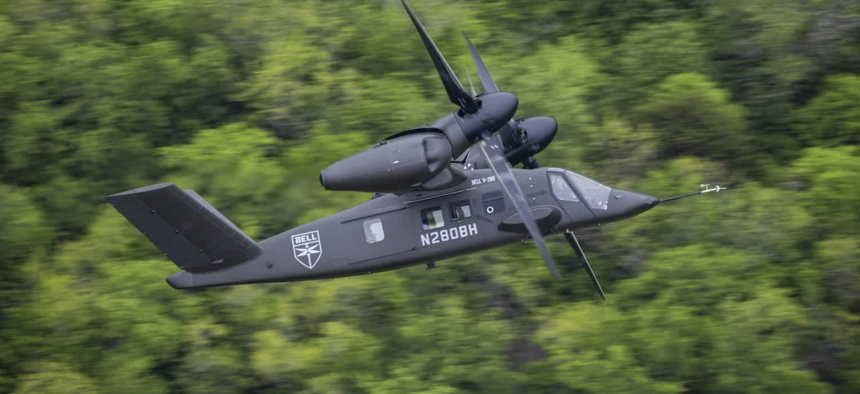
The Bell V-280 Bell
Army Chooses Bell V-280 to Replace Its Black Hawk Helicopters
Bell beat the Defiant-X pitched, a compound coaxial helicopter offered by a Sikorsky-Boeing team.
The U.S. Army has chosen Bell to build a new aircraft that will replace the venerable UH-60 Black Hawk, which has been flying soldiers in combat since the 1970s.
Bell received a $232 million contract on Monday—the first installment of what could be a $7.1 billion deal for development and an initial batch of aircraft.
“It’s a chance to move to the next step in this vital program,” Doug Bush, the Army acquisition chief, said during a Monday evening call with reporters.
It’s a huge win that could be worth more than $70 billion for the Textron-owned company in the coming decades depending on how many aircraft are ordered by the Army and foreign militaries.
“For Textron, it is a generational win that rejuvenates Bell's military franchise,” Cowen analyst Roman Schweizer wrote in an Oct. 12 note to investors.
Bell, which pitched the V-280, a tiltrotor aircraft similar to the V-22 Osprey, beat a Sikorsky-Boeing team that had proposed a coaxial helicopter, which uses two stack rotors that spin in opposite directions providing more stability than traditional helicopters.
The tiltrotor can takeoff and land vertically like a helicopter, but rotate its propellers forward allowing it to fly at fixed-wing aircraft speeds.
“The V-280’s unmatched combination of proven tiltrotor technology coupled with innovative digital engineering and an open architecture offers the Army outstanding operational versatility for its vertical lift fleet,” Bell said in an emailed statement.
The contract awarded Monday is for a “virtual prototype,” not an actual aircraft, Army officials said. An initial prototype could come in 2025, but the Army would need to award additional contracts before that happens, officials said.
Army officials touted the speed in which the award was made, saying it has been accelerated by some four years. Over the past nine years, both bidders built and flew demonstrators of their proposals.
“We have taken new authorities from Congress, we have melded them with a very thoughtful, very deliberate approach in terms of trying out things before we proceed and doing things in terms of the program structure to allow us to move at greater speed than originally planned to get this capability in the hands of soldiers,” Bush said.
Officials declined to give specific reasons why they chose Bell over Sikorsky-Boeing other than the Bell proposal was the “best value.”
The losing companies have three days to request a debriefing from the Army about their decision. After that briefing they have the option to protest the Army decision. If they do protest, the Government Accountability Office would conduct a review and make a ruling.
“We remain confident DEFIANT X is the transformational aircraft the U.S. Army requires to accomplish its complex missions today and well into the future,” Sikorsky and Boeing said in a joint statement. “We will evaluate our next steps after reviewing feedback from the Army.”
Bell first unveiled the V-280 in 2013. Unlike its predecessor the V-22, the engines at the end of its wing are fixed, a move that is supposed to lower maintenance costs.
The Army calls the replacement deal the Future Long-Range Assault Aircraft, or FLRAA.
“We expect initial FLRAA buy to be 750-1K, and mixed fleet of FLRAA + UH-60 for decades,” Schweizer wrote in an Oct. 12 note to investors.




